#have fun with the polls :3
Explore tagged Tumblr posts
Text
Those polls "could xyz character survive the Reaper's Game" have people tend to forget that the main reason why anyone would survive the Game isn't because they are smart or talented, because they would be able to solve puzzles or defeat noise, but because... they are able to change.
Shibuya's Reaper Game isn't like any Reaper's Game. They take an entry fee, being what one's value most, and that loss forces people through a difficult situation they can only solve by growing as a person. Shiki would've been erased had she not been able to accept herself as she was. Beat would've been erased had he not been able to accept to ask for help so he could protect what mattered to him. Neku would've been erased had he not been able to learn to expand his world and trust his partners.
Of course, people changing (for the better) means their Soul gets more refined and thus their Imagination level rises, but having high levels of Imagination from the start isn't all it takes for someone to win the Reaper's Game! So yeah to me, the only question you might need to answer when replying to these polls is : "Would this character be able to have character growth?" Most often yes. But sometimes... you might be surprised.
#twewy#twewy spoilers#wondering if i should tag the one running the poll account#oh well#anyway this is my interpretation of the Reaper's Game. i might be incorrect. but i think it's what the game tries to direct us towards#and it's also why for example mr h was so pissed at Shinjuku's Reaper's Game. bc it suckssss compared to Shibuya's#every characteristic of Shibuya's Game is meant to push everyone involved to change to learn and to grow (yeah including reapers)#the partnerships. the entry fees. the harrier/support reapers. the pin level limit. the use of RG events for missions#while Shinjuku's all about who's the strongest. who's the best leader. who'll be able to crush others without looking back#and tbh this is only what we see from Shinjuku's game in Shibuya which might not be the original rules#still that applies quite well to Shoka's explanations of her own victory of the Game.#she didn't learn anything from it. she was just powerful and having fun with psychs and that's why she won#meanwhile Neku went through 3 years of therapy in barely three weeks#and that gave him even more reasons to go to actual therapy#anyway. the Reaper's Game is wayyyy more complicated than you'd think#still#have fun with the polls :3
47 notes
·
View notes
Text

Casanova sketches!
#casanova#giacomo casanova#david tennant#my art#bbc casanova 2005#this series is SO FUN and so sad it's great#alright!! all 3 winners of last poll drawn!! I have to make a new poll#drawing him is a great form of stress relief for me rn and I have a lot of it lately#a client company ghosting without paying me after I've done and turned in everything after a million revisions and over a month of work#another company rushing me into and making me spend 400€ on travelling only to tell me they made a mistake and I could have stayed#🙃 please all I ask for is a little respect for my time and finances#anyway sorry for the rant I'm normal again#hope you enjoy these slutty Davids#tw blood
1K notes
·
View notes
Text
Remade because I forgot to extend the poll to 1 week lol
Feel free to add context in replies/tags!
I'm nosy and want to know your hours and reasons!
#tf2#team fortress 2#poll#not me having to remake this poll 3 times. anyways.#my main is demoman because i love blowing things up and i refuse to play demoknight because im stubborn and prideful#my secondary is medic with 100+ hours because medic is useful and easy to win with lmfaooo#my 3rd most played character is soldier and im gonna be at 100 hours soon yippie#engie used to be my main when i started but now i only play him out of spite#i enjoy pyro and heavy gameplay#scout is fun i dont play him very pften though i dont feel useful when i do lol#ive tried out sniper and spy recently? theyre fun on the right maps
506 notes
·
View notes
Text


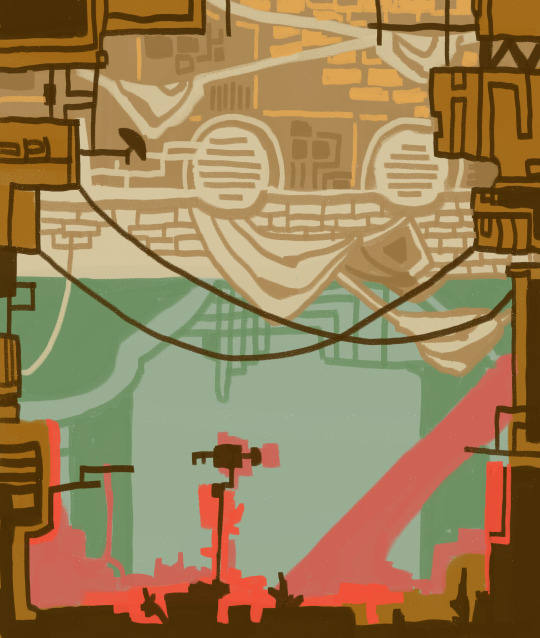

rain world if it was hot
#rain world#rainworld room polls ending got me drawing rw rooms in a daze#its fun tho. rain world rooms are fun and shapes :)))#!!#my art#reccomending looking like you just woke up by the front bottoms today me thinks :)#anyhow didnt have to much to say!#oh wait i did uh yeah jumpscare im alive and posting stuff today becasue it felt awkward to post 3 days in a row instead of 3 at once#so uh like enjoy that maybe if you like that or dont i dunno up to you#thumbs up: thumbs up: thumbs up:
551 notes
·
View notes
Text
Round 3 - Mammalia - Carnivora




(Sources - 1, 2, 3, 4)
Our next order of mammals is Carnivora, mammals specialized primarily in eating meat. A diverse order, Carnivora contains the living families Canidae (“dogs”), Ursidae (“bears”), Phocidae (“earless seals”), Otariidae (“eared seals”), Odobenidae (“Walrus”), Mephitidae (“skunks” and “stink badgers”), Ailuridae (“Red Panda”), Procyonidae (“raccoons”, “coatis”, “ringtails”, “kinkajous”, and kin), Mustelidae (“weasels”, “badgers”, “otters”, “Wolverine”, and kin), Nandiniidae (“African Palm Civet”), Viverridae (“civets”, “genets”, “Binturong”, and kin), Herpestidae (“mongooses”), Eupleridae (“Malagasy mongooses”), Hyaenidae (“hyenas”), Prionodontidae (“Asiatic linsangs”), and Felidae (“cats”).
As the sixth largest order of mammals, Carnivora is very diverse and exhibits a wide array of body plans, varying greatly in size and shape. They usually have large, conical, thick, stress-resistant canine teeth. Most species have eyes on the front of their face, pointing forward. They often have a very well-developed sense of smell. Some carnivorans have retractile or semi-retractile claws. Carnivora is separated into two suborders, Caniformia and Feliformia, with Caniforms containing canids and their relatives and Feliforms containing felids and their relatives. (Yes, even in taxonomy, there is a dichotomy between cats and dogs.) Caniforms have longer jaws and more teeth, with less specialized carnassial teeth. They also tend more towards omnivory and opportunistic feeding, while the feliforms, other than the viverrids, are more specialized for eating meat. Some carnivorans have secondarily evolved mainly herbivorous diets. They exist in almost every habitat, from the polar North to hyper-arid deserts to marine seas.
Male carnivorans are usually larger than females. Some species are social while others are solitary. Some species only meet to mate, some form family groups organized around a breeding pair, and some involve a single male or males leading a harem of females and their young. Carnivores usually invest a lot into their young, teaching and raising them to adulthood.
Carnivoramorpha as a whole first appeared in the Paleocene of North America about 60 million years ago, as small marten-like or civet-like predators of insects, lizards, and other small vertebrates. Feliforms and Caniforms split around the Middle Eocene, about 42 million years ago. The precursors to the living feliforms remained forest-dwelling, arboreal or semi-arboreal ambush hunters, while the caniform precursors were more mobile, opportunistic hunters.

Propaganda under the cut:
Canids tend to live as monogamous pairs. Wolves (Canis lupus), Coyotes (Canis latrans), African Wild Dogs (Lycaon pictus), and Dholes (Cuon alpinus) live in groups that include a breeding pair and their offspring. Wolves may even live in extended family groups. Living in family groups allows these animals to work together to take down prey larger than themselves.
The Domestic Dog (Canis familiaris) was the first species to be domesticated by humans, from the Wolf (Canis lupus), more than 30,000 ago when humans were still hunter-gatherers. Domestic Dogs have evolved alongside humans, adapting to better understand and communicate with us, read human body language and expressions, and smell human emotions. Both dogs and humans release oxytocin while spending quality time together, a sign of a strong social bond. Over 340 breeds of Domestic Dog have been selectively bred for tasks such as hunting, herding, pulling loads, detecting a variety of scents, protection, and companionship, with various breeds also filling roles in therapy, aiding disabled people, and assisting police and the military.
According to the Creation Myths of the Serer People, jackals were the first animals on Earth, and the first intelligent beings before humans, and will be the last. In some stories, the jackal is sent to Earth by Roog as a messenger, and in others as a fallen prophet for disobeying the laws of the divine. The movements of the jackal are carefully observed, because the animal is viewed as a seer who came from the transcendence and maintains links with it. Although believed to be rejected by the other animals and deprived of its original intelligence, it is still respected because it dared to resist the supreme being who still keeps it alive.
The Polar Bear (Ursus maritimus) is the largest land carnivore, with adult males weighing 300–800 kg (660–1,760 lb) and being 200–250 cm (6.6–8.2 ft) long. Females are smaller at 180–200 cm (5.9–6.6 ft) with a weight of 150–300 kg (330–660 lb). Adults may stand 130–160 cm (4.3–5.2 ft) tall at the shoulder. The largest Polar Bear on record, reportedly weighing 1,002 kg (2,209 lb), was a male shot at Kotzebue Sound in northwestern Alaska in 1960.
The word “panda” derives from the Nepali word “ponya”, which means “ball of the foot” and “claws”. The Nepali word for the endangered Red Panda (Ailurus fulgens) is "nigalya ponya", which has been translated as "bamboo-footed", due to the animal’s adapted wrist bone which allows it to grip bamboo. When the Red Panda was first described in 1825, it was named an English shortening of this name: “panda.” For more than 40 years the Red Panda was known as simply the panda: the one and only panda. However, when the vulnerable Giant Panda (Ailuropoda melanoleuca) was described in 1869, it was also given the name panda. Historically, there was much debate over the taxonomic positions of these two species, as they were both carnivorans that had adapted to a very specific diet of mostly bamboo. However, we know today that the Giant Panda is indeed a bear and not closely related to the Red Panda, which is the only living member of its own family.
The endangered Giant Otter (Pteronura brasiliensis) is a semi-aquatic predator of north-central South America, and is capable of bringing down animals as tough as a small caiman. Giant Otters live in extended family groups, and are highly social with each other, but extremely territorial of other groups. Battles between groups sometimes break out at the boundaries between territories.
Weasels (genus Mustela) have a behavior called the “weasel war dance”, which consists of a frenzied series of hops sideways and backwards, often accompanied by an arched back and a frizzed-out tail. The weasel war dance happens when the animal is excited or happy, and often occurs after they have caught or killed their prey, or are playing.
Ferrets (Mustela furo) were domesticated from the European Polecat (Mustela putorius) around 2,500 years ago. The Romans used ferrets to hunt rabbits, rodents, and moles, as they are specifically adapted to squeeze into holes after prey. Genghis Khan, ruler of the Mongol Empire, is recorded as using an army of ferrets in a gigantic hunt in 1221 that aimed to purge an entire region of wild animals.
The smallest carnivoran is the Least Weasel (Mustela nivalis). Average body length (not counting the tail) in males is 130 to 260 mm (5 to 10.2 in), while females average 114 to 204 mm (4.5 to 8 in). Males weigh 36 to 250 g (1.3 to 8.8 oz), while females weigh 29 to 117 g (1 to 4.1 oz). Despite their diminutive size, Least Weasels are still effective predators, and can take on prey up to the size of a rabbit.
The North American Black-footed Ferret (Mustela nigripes) declined throughout the 20th century, primarily as a result of declines of its main prey, Prairie Dogs (genus Cynomys). In 1979, it was declared extinct. However, a small wild population was discovered in Meeteetse, Wyoming in 1981! A captive breeding program was launched, using these ferrets, and a reintroduction campaign was put into play. Today, over 200 mature individuals are in the wild across 18 populations, with four self-sustaining populations in South Dakota, Arizona, and Wyoming. In 2008, the Black-footed Ferret’s IUCN status was changed from “extinct in the wild” to “endangered”. In February 2021, the first successful clone of a Black-footed Ferret, a female named Elizabeth Ann, was introduced to the public. She was cloned using frozen cells from Willa, a female Black-footed Ferret who died in the 1980s and had no living descendants. This exciting development opened the doors to a new option for introducing much-needed genetic diversity into the captive breeding population. Elizabeth Ann could not breed herself, due to a condition unrelated to the cloning process, but in 2024, two new Black-Footed Ferret clones, Noreen and Antonia, were also cloned from Willa’s frozen cells. Antonia has since birthed a male and female kit, and Noreen is waiting for a suitable match.
The Honey Badger (Mellivora capensis) is famous for its strength, ferocity, and toughness. It is known for being able to fearlessly fight back when cornered, sometimes even dissuading Lions (Panthera leo) and Spotted Hyenas (Crocuta crocuta) from attacking it. It often raids beehives in search of honey and larvae, and is unbothered by bee stings, which have trouble penetrating its thick skin. They have been observed to kill and eat Black Mambas (Dendroaspis polylepis). They are also highly intelligent, and have been observed manipulating tools and performing complex problem-solving. Despite all this, they are only dangerous to humans if provoked, and most of their reputation comes from their willingness to defend themselves.
There are three species of raccoon, and the small, critically endangered Cozumel Raccoon (Procyon pygmaeus) is the rarest of them. It is native only to Cozumel Island off the coast of the Yucatan Peninsula, Mexico. It is estimated there are only around 192 mature individuals left in the world.
Walruses (Odobenus rosmarus) have powerful, mobile lips that they can use to generate high-powered suction. They do this to feed on one of their favorite prey items: clams. A Walrus can suck the meat out of a clam by sealing its powerful lips to the animal’s shell and withdrawing its piston-like tongue rapidly into its mouth, creating a vacuum. They can also use their mobile lips to whistle in the same way humans do!
The Baikal Seal (Pusa sibirica) is the only species of exclusively freshwater seal. They are native only to Lake Baikal in Siberia, Russia. The most recognizable characteristic of the Baikal Seal is its large, dark eyes. Lake Baikal is the deepest lake in the world, and has varying levels of light intensity. The seal’s large eyes allow it to take in as much light as possible in this environment.
The African Palm Civet (Nandinia binotata) is the most genetically isolated Carnivoran, being the only species within its whole superfamily.
The Jaguar (Panthera onca) employs an unusual killing method: it bites directly through the skull of mammalian prey, between the ears, to deliver a fatal blow to the brain. It does this with a powerful bite force of 1,500 PSI. This bite also allows it to pierce the shells of turtles and the osteoderms of caimans.
When Cecil the male African Lion (Panthera leo leo) was killed in July 2015 by Walter Palmer, an American recreational big-game trophy hunter, there was international uproar and a change in the atmosphere regarding trophy hunting. There was also worry amongst the scientists who had been studying Cecil’s pride that his cubs were now in danger. When one or more new male Lions replace a previous male(s) associated with a pride, they often kill any existing young cubs, to ensure that only their bloodline is produced going forward. However, Cecil had formed a partnership with another male lion named Jericho. When Cecil was killed, Jericho took over the pride but did not kill Cecil’s cubs, and also protected them from any rivals.
The Domestic Cat (Felis catus) was domesticated from the African Wildcat (Felis lybica) about 10,000 years ago. Ancient Egyptians revered the Domestic Cat, and families would take their dead cats to the sacred city of Bubastis, where they were embalmed and buried in sacred repositories. Cats eventually replaced Ferrets as the pest-controlling housepet of choice in Ancient Greece and Rome, as they were considered more pleasant to keep around the house. Like dogs, they have adapted to live alongside us, evolving new vocalizations, body language, and behaviors specifically for communicating with humans, and generally becoming a social species (the African Wildcat is typically solitary and territorial). Today, there are over 41 breeds of Domestic Cat, and they are kept mainly for companionship and pest control. Unfortunately, they have also become one of the most abandoned pets.
The Cheetah (Acinonyx jubatus) is regarded as the fastest-running land animal. It is capable of running at 93 to 104 km/h (58 to 65 mph) in a sprint.
The Asian Palm Civet (Paradoxurus hermaphroditus) is threatened by poaching and the illegal wildlife trade in Indonesia. They are captured for use in the production of kopi luwak. Kopi luwak, also known as civet coffee, is a coffee that consists of partially digested coffee cherries, which have been eaten and defecated by the Asian Palm Civet. The cherries are fermented as they pass through a civet's intestines, and after being defecated with other fecal matter, they are collected. What was once a traditional drink, made from coffee cherries collected from civet feces in the wild, has become increasingly commercialized due to international demand and curiosity. Now, to meet demand, Asian Palm Civets are captured, kept in battery cages, and forcefed nothing but coffee cherries. The civets in kopi luwak farms are kept in abysmal conditions which include isolation, poor diet, small cages, and a high mortality rate. Kopi luwak is one of the most expensive coffees in the world, with retail prices reaching US$100 per kilogram (2.2 lbs) for farmed beans and US$1,300 per kilogram for wild-collected beans.
In some countries, the African Civet (Civettictis civetta) (image 4) is threatened by capture for the perfume industry, as its pheromone civetone is often used as a natural musk. The Calvin Klein-brand male cologne Obsession utilizes synthetic civetone, making the cologne highly attractive to feliforms. Obsession is sometimes used in the field to attract wild cats to camera traps, and is also used in zoos and sanctuaries as scent enrichment.
Mongooses (family Herpestidae) are one of at least four known mammalian taxa with mutations in the nicotinic acetylcholine receptor that protect against snake venom. This makes them fierce and effective predators of venomous snakes.
The Spotted Hyena (Crocuta crocuta) lives in large clans which can consist of up to 80 individuals. These clans are typically led by females, though they can occasionally co-dominate with a male. Clans are run by a matriarch, and her youngest female cub will become the new matriarch when she passes. When a male co-dominates with a female or is otherwise able to lead, this is because the male was born to the matriarch of the clan and has taken the rank directly below his mother.
The Aardwolf (Proteles cristatus) is a small, basal hyena that mainly eats termites. Like other animals adapted for eating termites, it has a long, sticky tongue.
Carnivorans usually occupy a very important part of the ecosystem, and most apex predators are carnivorans. Apex predators can be considered ecosystem engineers, due to the huge impact they have on their environment. One of the most famous examples of this was the reintroduction of Wolves (Canis lupus) in Yellowstone National Park. In 1884, the state of Montana instituted a bounty on Wolves: one dollar per Wolf killed. Wolves were considered a “menace” to Yellowstone’s wildlife, and more concerted efforts mounted to exterminate them. The Elk (Cervus canadensis) population began to explode, and they grazed their way across the landscape, killing young brush and trees. As early as the 1930s, scientists were alarmed by the degradation and were worried about erosion and plants dying off. By the 1970s, there were no resident populations of Wolves in Yellowstone, and Wolves had been almost completely eradicated in the lower 48 states. In 1974, the Wolf was listed in the endangered species act.
Starting in January 1995, Wolves from Canada began to be relocated to Yellowstone National Park. In the years that followed, wolves brought the Elk population down and their presence protected the open valleys from overgrazing, as the fear of predators kept the herds on the move. Willows (genus Salix) began to grow larger, with an increase in size of 1,500% by 2020. With the foliage returning to the park, Beavers (Castor canadensis), Lynxes (Felis lynx canadensis), Wolverines (Gulo gulo) (image 1), and many other formerly reduced species began to rebound. Beaver colonies have grown from 1 in 1995 to 19 by 2015 with four active dams in use. The dams build wetland ecosystems, used by millions of other species. This is an enduring example of a Trophic Cascade: a powerful indirect interaction that can control entire ecosystems, occurring when a trophic level in a food web is removed or added.
Even though domestic carnivorans like the Domestic Dog, Domestic Cat, and to a lesser extent, the Ferret, are some of the most popular pets in the world, most wild carnivorans have been, and still are, unfairly demonized. Many species have been overhunted, resulting in extirpation in some areas. Even early “conservationists” did not understand the value of predators, considering it a boon to the ecosystem to wipe them out entirely. Bounties are still placed on carnivorans today, and many ranchers and farmers push to have them completely wiped out to protect their livestock. If you cross the border of Yellowstone into a nearby town, you must be ready to hear all about how Wolves are evil creatures who kill for pleasure, and are going to kill all the precious Elk. It is a constant uphill battle to reintroduce carnivorans who may have been extirpated from their historical ranges. Yet in some places, humans have learned to coexist with these important parts of the ecosystem. One of the best ways to support carnivorans is through ecotourism. Locals tend to see more value in the predators they have to share space with when visitors are both excited about and bringing in tourism revenue because of these animals.
#animal polls#round 3#mammalia#I didn’t mean to post this early for some reason the schedule turned into a post now button when I went to edit it#but here we are#my buffer has finally caught up to me and here I am writing about carnivorans at 3am when I have to get up in 3 hours and drive for 12#rip me#sorry there’s not more fun animals facts
155 notes
·
View notes
Text
#arcane#arcane polls#arcane poll#type: polls#i know my audience…. i knda have an inkling whos gonna win my poll but eh let’s have some fun#too bad i cant run this poll for like 3 days or something#a week is way too long ngl
231 notes
·
View notes
Text




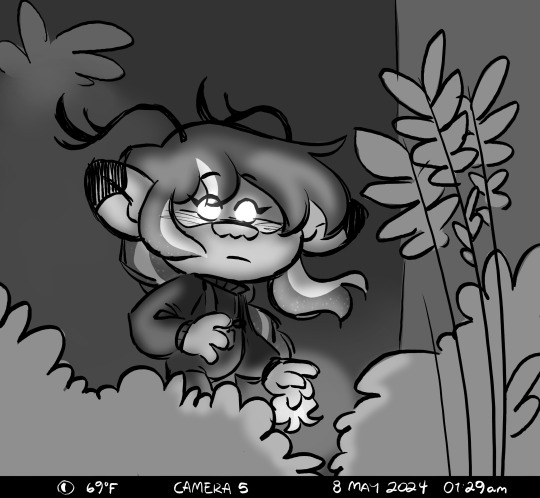


ERMM.... trollsona posting.... Firefly my absolute beloved. She is me fr. Cant believe I haven't shared her here yet
#trolls oc#trolls band together#trollsona#rainyart#dreamworks trolls#trolls#errr..... thats all i wanna tag todayHAHDJXHAH#I mostly just post here for myself :3 interactions are a fun bonus#UGH theyre playing my least favorite song in the lobby of the optometrist#anyways i still wanna put together a little compilation of my folk troll headcanons like different subgenre tribes and where they live#and different features they have and the culture around their antlers/horns/buggy wings#also fun fact i didnt like the name Rainy for them so when i was finding replacements#i found firefly and i was like WAIT.... i can make her braid glowy sometimes like a firefly and i still did a poll but yeah that cinched it#other contenders were River‚ Sparrow‚ and Spider!#enough yapping HIT POST
173 notes
·
View notes
Text




polle more like. polldeez.
og images for first 3 under the readmore



#mouthwashing#polle mw#polle mouthwashing#mouthwashing polle#mw polle#captain curly#swansea mouthwashing#daisuke mouthwashing#anya mouthwashing#im not tagging all of them sobs#anyways. check out my collection of polle doodles#sorry also to anybody who doesn’t wanna see mw on their dash or just At all here i promise im not very strongly into mouthwashing-#its like. plateu’d rn if that makes sense#FUN FACTBTW! i have ZERO memory of making the last polle redraw#all 3 were requests but i vividly remember doing everything BUT the judgment one#my art#diego doodles#im a little hashtag shy i havent posted any non-oc stuff on here in a long time. plox do not bite
59 notes
·
View notes
Text
MDZS Height Poll: Who is (technically) the tallest character. Please remember that these polls are for fun!
#mdzs#poll#Please remember that I WILL see notes and comments and reblogs. Let's have fun with this clearly very silly poll!#I am begging everyone to be nice. We can get icecream afterwards if we all behave.#Propaganda is welcome if you dare take up the bat to swing at the hornet's nest.#As always - I will have a little comic at the end of this poll based on the results!!!#I'm so tempted to sway votes but the beauty is in the community response. You guys always surprise me!#Will the winner be based on technicality? WHO'S technicality? So many choices!#NHS and JGY are a big mood for being 'tall' but labeled short due to being surrounded by 'very tall' people.#Shout out to my little cousin who's a natural 6'1"and STILL wears the 6 inch heels. That's feminism.#I wanted to have the next poll be 'who's in the middle of the bed in the 3zun relationship' but I need to draw for that one.#it's been a rough week for me. Comic resumes tomorrow though - I just have not been home to upload anything via scanner.#I'm alright I promise B'*) Just a chaotic lifestyle. Hope you have all been well <3
463 notes
·
View notes
Text


145 notes
·
View notes
Text
Random Drawings I Did While Waiting for Poll Results
Don't forget to vote in our second-to-last Archonexus Away Team Poll!

Flapjack and Alistair getting along

Jut's lvl 20 melee skill VS XiaoLiang's lvl 2 melee skill

Jut still getting used to the taste of hemogen

XiaoLiang might have crushes on all four Jones boys, but he's shit at flirting and they don't reciprocate, so he is always sad and disappointed

I felt like drawing different outfits, so here's Hipster Flapjack...

... Outdoorsy/hiker/camping XiaoLiang...

... And, uh, Jut in... whatever this is.
Don't forget to vote in our second-to-last Archonexus Away Team Poll!
#gracie plays#A Mechanitor's Message#art of my rimworld colonists but not in the context of rimworld#rimworld bloopers I guess#art#my art#traditional art#rimworld art#unpolished art#slightly more polished art than usual#I have been a bit sick lately and drawing makes me feel better#so now y'all have to deal with this lmao#drawing and watching X-Files#I never saw X-Files before#I always wanted to when I was in highschool#but my mum said it was “too scary” so I just read creepypasta and watched horror youtube channels when she wasn't paying attention instead#and loooots of true crime and unsolved mysteries#one of my high school history teachers had us do a report on unsolved mysteries#I got The Voynich Manuscript#cool stuff#not quite as spooky or mysterious as some of the others alas#but still fun#I'm too sick to be rambling in the tags like this#apologies y'all XD#please vote in the poll!!#Have a wonderful day <3 <3 <3
44 notes
·
View notes
Text
because i was rewatching 1x04 and was reminded that episode 4 of almost every season is an absolute banger of an episode. (also i know what recency bias might do to this poll so please take a second to remember the episode 4s of seasons gone by before voting askjdfh)
#911 related#i already know what's going to happen but i'm sorry we need to take a moment to appreciate 1x04 2x04 and 4x04 are 3 of the best episodes#this show has ever produced!!!!!!!#like 4x04 is still to this day my number one ep i think#i have eps i probably rewatch more or have more *fun* watching or that make me lose it for different reasons#but in terms of storytelling i still think it's the best#and stuck is STUCK!!!!!#it's THE ep#and 1x04 is truly so fucking devastating i don't know what else to say#i also looooooove 5x04 even though it's really painful#chim's scene at the hospital is gutwrenchng#and the 'ice goes on the eye bud' scene :(((((((#and don't get me wrong 7x04 was revolutionary and i love it#but idk if it beats 2x04 or 4x04 for me#i've loved them for too long!!!!#anyway!#can't wait to see what this poll looks like in the morning lmao
194 notes
·
View notes
Text


hi @hotvintagepoll I've made a letterboxd list with all the actors from this tournament if anyone would like an easy enough way to see all the guys and the movies they've been in <3
#sorry I'm addicted to procrastinating work i actually have to do by making letterboxd lists#i think i got em all but feel free to let me know if i missed anyone#the round 3 lads are ranked by how high the percent of their winning vote was/how close they came to winning#but after that its just the order the polls were posted in because i Cannot Be Bothered#anyway im unreasonably invested in this thing despite not really liking men it's just fun I like it#can't wait for the actresses tournament <3
252 notes
·
View notes
Text
171 notes
·
View notes
Text

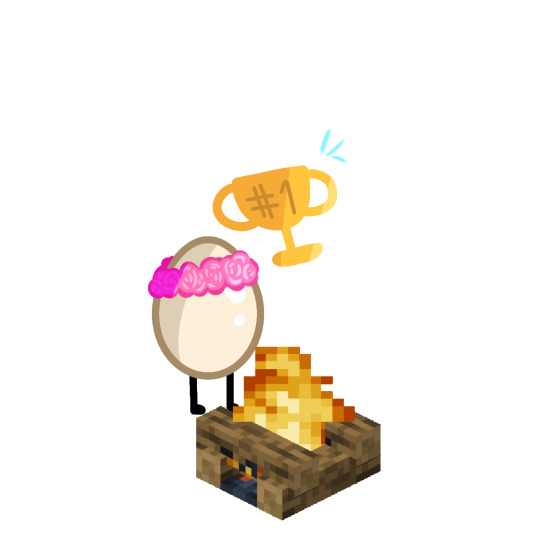
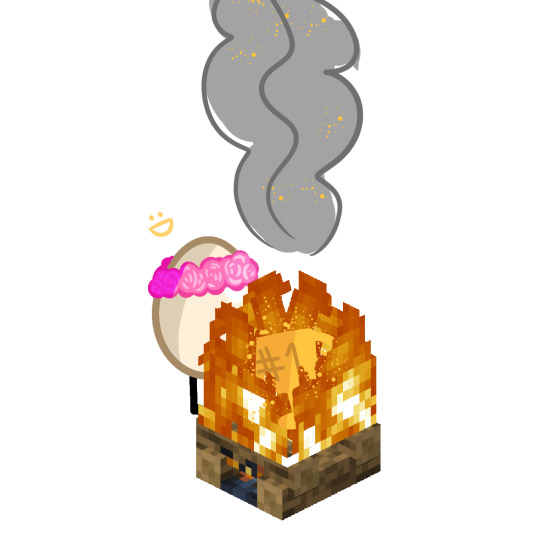


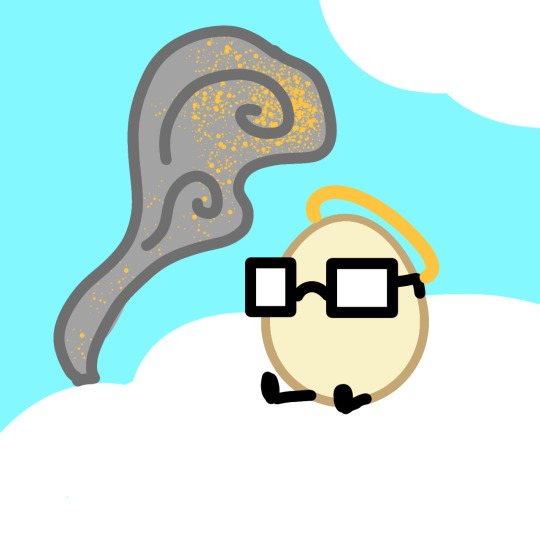

Congratulations to Flippa for winning her first ever poll! Here's the drawing I promised :D
#qsmp#qsmp eggs#poll the egg#qsmp juanaflippa#it really gave her that trophy like a sacrifice to the greek gods kkkkkkkk#I'm having so much fun doing doodles of Poll rn. They're my little guy <3
219 notes
·
View notes
Text
Round 3 - Mammalia - Peramelemorphia


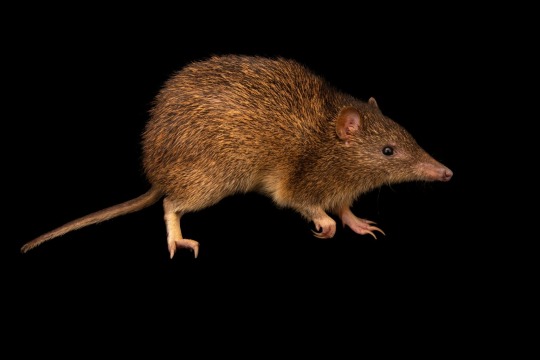

(Sources - 1, 2, 3, 4)
The marsupial order Peramelemorphia contains the living families Peramelidae (“bandicoots”) and Thylacomyidae (“Greater Bilby”).
Peramelemorphs all tend to have a characteristic shape: a round, arch-backed body with a long, delicately tapering snout, upright ears, relatively long, thin legs, and a thin tail. They range from the size of a rat to the size of a rabbit. They are omnivorous, feeding mainly on soil-dwelling invertebrates, as well as seeds, fruit, and fungi. They possess a well-developed sense of smell and eyes that are adapted for nocturnal habits. They are are generally solitary, with females taking care of their young.
Female peramelemorphs have a pouch that opens to the rear, to protect their young while they dig for insects and their larvae. The gestation period of peramelemorphs is the shortest among mammals, at just 12-14 days. As in other marsupials, peramelemorph joeys are born as tiny, relatively undeveloped neonates and must crawl their way from the vagina to the pouch to latch on to a teat, where they will complete the rest of their development. Peramelemorph growth is fast, with bandicoots setting off on their own and becoming sexually mature at just three months of age. Female bilbies reach sexual maturity at five months of age, and male bilbies become sexually mature at eight months. This allows a given female to produce more than one litter per breeding season and gives peramelemorphs an unusually high reproductive rate compared to other marsupials.
Peramelemorphs originated in the Late Oligocene. Both the oldest modern bandicoot (Peramelid) and the oldest bilby (Thylacomyid) are known from Middle Miocene fossil deposits (around 15 million years old).

Propaganda under the cut:
The name bandicoot is based on the animal’s ratlike appearance. The name comes from an English corruption of an Indian word "pandi-kokku" meaning "pig-rat".
The smallest peramelemorph is the Mouse Bandicoot (Microperoryctes murina), which is 15–17.5 cm (5.9-6.9 in) long.
The Golden Bandicoot (Isoodon auratus) is especially adapted for life in hot, semi-arid environments. It has a low body temperature that is constantly changing, making it heterothermic. This allows the internal body temperature to fluctuate in response to extreme environmental temperatures without inhibiting and denaturing necessary proteins. Additionally, its low metabolic rate correlates to less heat being produced by the body, and a low thermal conductance does not allow the animal to capture and store heat well. A highly efficient panting mechanism allows for a low rate of evaporative water loss when cooling the body, conserving precious water.
The Northern Brown Bandicoot (Isoodon macrourus) is one of relatively few native Australian ground-dwelling mammals that is able to survive in urbanized landscapes, due to their generalized diet and habitat requirements.
The Eastern Barred Bandicoot (Perameles gunnii) (image 1) is the basis for the popular videogame character Crash Bandicoot, and was selected from a number of Tasmanian mammals by creators Andy Gavin and Jason Rubin for its appeal and relative obscurity.
Described in 2014, a fossil species of Miocene bandicoot found at the Riversleigh World Heritage Area was given the genus name Crash. It was given the species names bandicoot. Because paleontologists are just Like That.
Wiped out due to predation from introduced foxes and domestic cats, as well as land-clearing for farming, the Victorian subspecies of the Eastern Barred Bandicoot (Perameles gunnii) was declared Extinct in the Wild. Thanks to 30 years of conservation efforts, breeding the bandicoots in human care and establishing fox and cat-safe sanctuaries, the mainlaind population was changed from Extinct in the Wild to Endangered in September 2021, a first for Australian conservation!
The Giant Bandicoot (Peroryctes broadbenti) (image 3) is more than twice the weight of other bandicoots and adult males of the species can attain weights well in excess of 4 kg (8.8 lb).
Unlike bandicoots, Greater Bilbies (Macrotis lagotis) (image 2 and gif) are excellent burrowers and build extensive tunnel systems with their strong forelimbs and well-developed claws. Burrows spiral down, making it hard for predators to get in. A bilby typically makes several burrows within its home range, up to about a dozen; and moves between them, using them for shelter both from predators and the heat of the day, as they are desert-dwelling animals.
Greater Bilbies are generally solitary, however, there are some cases in which they travel in pairs. Pairs usually consist of two females as the sole caregivers of their offspring.
Greater Bilbies do not need to drink water, as they retain all the moisture they need from their food.
Because rabbits are invasive in Australia, introduced by European settlers, bilbies have been popularised as an Australian alternative to the Easter Bunny. Haigh's Chocolates in Adelaide made 950,000 chocolate “Easter Bilbies” between 1993 and 2020, with proceeds donated to the Foundation for Rabbit-Free Australia, which does environmental work to protect the indigenous biodiversity of Australia.
Today, only the Greater Bilby survives and is vulnerable, but the Lesser Bilby (Macrotis leucura) is a recently extinct relative, having possibly survived into the 1960s. Its extinction was much “quieter” than that of the Thylacine, and was likely due to introductions of invasive predators like the domestic cat and red fox. Other “quiet extinctions” include that of the Desert Bandicoot (Perameles eremiana) which appears to have disappeared between about 1943 and 1960, and the Nullarbor Barred Bandicoot (Perameles papillon) which was last collected in 1928.
Today, many peramelemorph species are still threatened and endangered due to habitat fragmentation and introduced predators, as well as from competition with introduced rabbits. Areas designated to conserve vulnerable populations of bilbies and bandicoots have predator exclusion fences built around them, and must be heavily monitored for break-ins. In Currawinya National Park in Queensland, high-salinity flood waters damaged a predator exclusion fence, allowing feral cats to enter the sanctuary, wiping out all the bilbies in the park.
#animal polls#round 3#mammalia#to be ENTIRELY CLEAR because I am a conservationist and this is a conservation hot topic and it’s probably going to come up a lot#I LIKE domestic cats and I like red foxes and I like rabbits#they are all 5 star animals to me#the issue here is irresponsible owners who don’t keep their pets contained and Those Pesky Europeans who thought it’d be fun to bring#foxes and rabbits along with them wherever they colonized so they could still recreationally kill them as a little#Memory of Jolly Old England#I do not fault cats and foxes and rabbits for doing what is instinctual to them#but I do think that it is our duty to fix the damages we’ve done to ecosystems by removing these introduced animals#With As Little Cruelty As Possible#and that unfortunately has to include culling them because there are not enough homes that can take in that many feral cats and there are#not enough zoos and sanctuaries to take in that many foxes and rabbits#Alright that’s it for THAT soapbox for now but because introduced animals and specifically domestic cats have done so much#ecological damage I absolutely can not promise it’s not going to come up again#because I am gonna use these to talk about conservation issues when I get the chance#Just Be Kind and Keep Your Cats Inside
57 notes
·
View notes